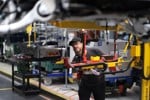The changes are part of a review of employee car ownership schemes (ECOS) by HM Revenue and Customs (HMRC), which looks at the way that company car tax and mileage payments interact.
Then-chancellor Gordon Brown announced in this year’s Budget that the government would consider changing the approved mileage allowance payments (AMAPs) structure to “ensure the rates and thresholds are set at an appropriate level to promote environmentally-friendly business travel.”
HMRC has come up with three scenarios to replace the current scheme, which pays drivers 40p per mile up to 10,000 miles and 25p per mile thereafter. It wants fleets to get in touch with their thoughts on the possible administrative burden a change could make.
Example figures shown below have already stirred up trouble. The Daily Telegraph concluded that a motorist driving 10,000 miles a year could face an additional annual tax bill of £500-£1,500.
But Stewart Whyte, director of fleet operators’ association ACFO, maintains that change is needed.
He says: “ACFO welcomes the review of the whole business of AMAPs. A single-tier schedule is incapable of addressing the operation it is designed to serve. That operation is about 4.5 million private citizens who use their own vehicles on employers’ business.
“Some vehicles are new and some are 15 years old. The ECO system is designed to minimise taxation and optimise driver choice with no regard to the environment.
“Employees running 10-year-old hatchbacks for 6,000 miles shouldn’t be allowed 40p a mile, tax free. These people will keep on running their 10-year-old hatchbacks and will not be tempted to upgrade. It’s money in the bank for them.”
Mr Whyte says the current system is incapable of meeting environmental objectives and should be reviewed and replaced with a multiple tier system, as set out in the HMRC proposals.
But accountant Alastair Kendrick, a partner at Bourne Business Consulting, fears that the administration of a new scheme will be overly complex and could lead to unfair punishment for firms that don’t get things right straight away.
He says: “We know from experience that firms will make mistakes. Whatever is introduced needs to be something that can be administered fairly and easily.
“For example, will the employer be responsible if the employee uses a different vehicle from the one registered on a business journey? New rules should be between the employee and HMRC, not the employer.
“My preferred choice is the CO2 option, but I would like to see it not brought in for three to five years – there could be a lot of low-paid workers who could be impacted by a sudden change and can’t afford a newer car.”
Andrew Dawson, manager of product and strategy for Masterlease, believes the review suffers from a lack of clear direction.
He says: “On the one hand, you’ve got promotion of a green agenda and on the other the realistic cost of running a vehicle. We’re not sure you can satisfy both of these objectives. The first option fulfils green requirements but might not be popular because people may not have the opportunity to change vehicles immediately.
“The second option doesn’t push the green agenda and the combination option, from an administration perspective, is going to be more challenging.”
Liz O’Donnell, policy adviser for HMRC, says: “People have said that the burden would be high and others have said it will be worth it. If there was a quick fix, it would have been done years go. It’s a difficult issue.”
The consultation ends on July 31. After that, the HMRC will report to the government and a decision on action will be taken.
The suggestions
LINKING AMAPS TO CO2 EMISSIONS
This scenario suggests tying AMAPs to more environmental incentives to reduce CO2 emissions.
The review has already highlighted an interaction between company cars, employee car ownership schemes (ECOS) and mileage payments, so the AMAP limits could be linked to the company car tax lower threshold. HMRC gives the following example of how this could:
AMENDING THE RATES AND THRESHOLDS
Idea number two suggests amending rates and thresholds to reflect different needs.
It would also reflect the high initial costs of drivers using their own cars for business purposes. Here are some illustrative examples to show how the current rates could be changed:
COMBINING THE TWO
Another possibility could be to combine an emissions-based approach with a change to rates and thresholds.
This could provide an incentive for fleet drivers to become more environmentally-friendly while recognising the higher initial costs. Such a move could result in something like this:















Login to comment
Comments
No comments have been made yet.